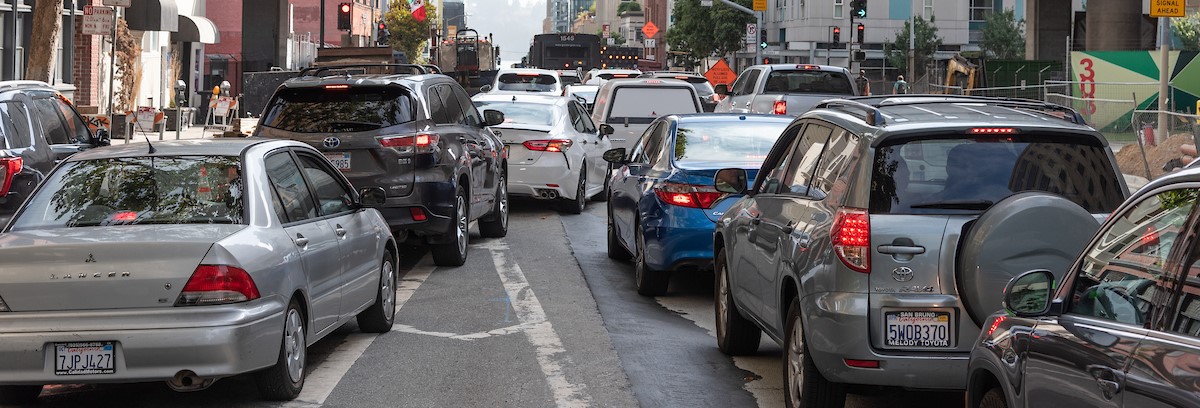By Bradley Dunn

As San Francisco continues to grow, moving more people in fewer vehicles will maximize the efficiency and sustainability of our transportation system. While the percentage of people traveling by private automobile in San Francisco has declined in recent years, about two-thirds of these private automobile trips are carrying only one person.
During World War II and the Oil Crisis of the 1970s, carpooling or sharing rides was a strategy for maximizing a scarce resource, gas. While our vehicles have become more fuel-efficient including the introduction of hybrid and electric cars, Today, the scarce resource is street space. Shared rides are one way the SFMTA is working to make our system function more efficiently.
We want to hear from you in a new survey about carpooling and shared rides in the city.
Between 2010 and 2016, the total Vehicle Miles Traveled (VMT) in the city has increased by 13 percent, according to an analysis by the San Francisco County Transportation Authority. Together, these are some of the reasons we are seeing increased traffic congestion. With San Francisco likely to continue being a desirable place to live and with a strong economy creating more jobs in the city, it is likely that this pattern will continue in future years, further increasing congestion.
Shared rides have the potential to be part of the solution. The benefit of carpooling lies in tapping into an abundant, yet underutilized, resource: empty seats in cars. New technologies, such as real-time ride-matching, have created opportunities to make sharing rides easier. Changing attitudes toward car ownership, the growth of the sharing economy, and an increasing number of lanes that give priority to high-occupancy vehicles, make ride-sharing more attractive than ever. If these factors increase the number of shared rides, it will remove vehicles from congested roadways, reduce trip times, improve transit reliability, decrease household transportation costs, and increase mobility and access to jobs.
Whether you ride or drive, the survey is intended to help the SFMTA better understand perceptions of carpooling and sharing rides in San Francisco. The survey will seek to understand residents’ priorities and the barriers they face when considering using shared-ride options. The insights gained from this survey will inform future transportation planning decisions to encourage shared rides, which may include restriping existing traffic lanes to high occupancy vehicle carpool lanes and designating convenient drop-off curb locations for carpools and app-based shared rides.
Take the survey here! Languages available include:
For more information please visit the project webpage
Published January 17, 2020 at 05:00AM
https://ift.tt/363bubY
Nhận xét
Đăng nhận xét